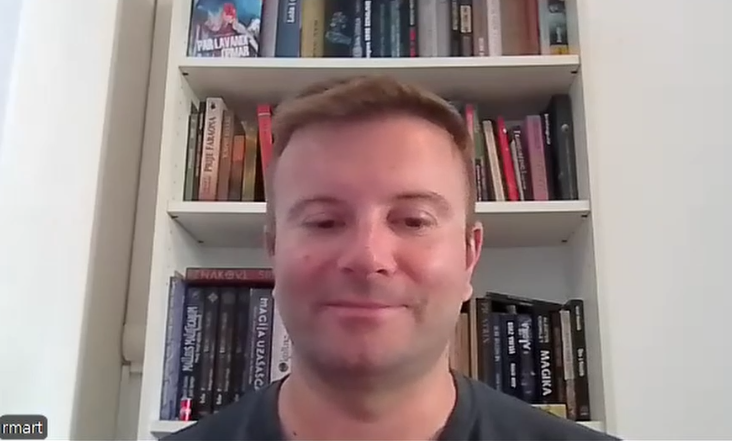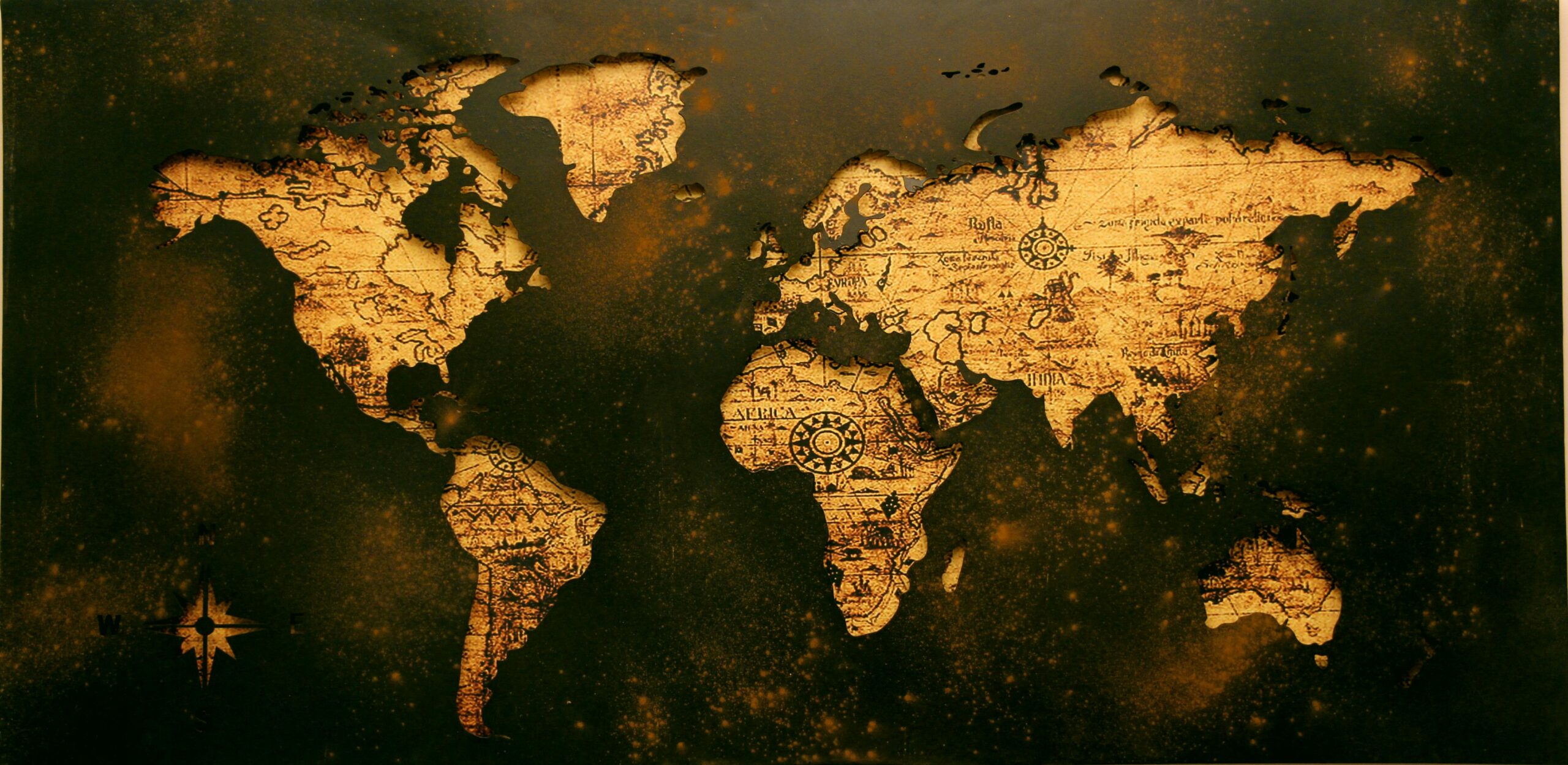By Bruno Rukavina
How does the chaotization of international relations manifest itself?
Based on the previous conceptual-theoretical analysis of anarchy and chaos/chaotization, as well as the geopolitical perspective of Evstafiev, it is possible to identify several potential elements and characteristics that mark chaos in today’s world. These are processes that affect the political, security, economic, informational, and social spheres, and together they form a complex-eclectic picture of international chaotization.
- We are witnessing the transformation (or, according to some authors, the collapse) of unipolar hegemony and the final end of the Americanized international order (Pax Americana). The potential withdrawal or weaknesses of the United States in its role as global arbiter are leaving behind a power vacuum. In such an environment, in the short term, no single power possesses sufficient capacity or political will to assume leadership, resulting in the creation of an interspace without rules, norms, or structures. Thus, it can be argued that chaotization is resulting in a temporary non-polar international order in certain parts of the world.
- There is a weakening of international institutions and international law. Organizations such as the United Nations, the World Trade Organization, the European Union, and the World Health Organization are increasingly losing legitimacy and effectiveness. At the same time, international law is becoming selectively applied or completely disregarded, as seen in examples including the Russia-Ukraine conflict, the Israeli-Palestinian conflict, and various unilateral military interventions without the approval of the UN Security Council, as well as the current Israeli-Iranian conflict. Who decides on war and peace? Who decides who can possess nuclear weapons? Why can Pakistan, India, and (unofficially) Israel possess nuclear weapons, but Iran cannot? Because power and force are the foundations of international relations, as realists constantly claim, and Israel and the United States possess such power, which gives them the basis to act as they wish according to their national interests, regardless of the constructions of other actors regarding Israel or the United States. Iran, if it wishes to survive, must, according to the realist perspective, simply demonstrate power and force and successfully defend and preserve itself, without great expectations of assistance from others. Nothing is predestined, neither the success of Israel and the United States nor of Iran, as the world is deeply rooted in contingency and the free action or inaction of actors. In fact, if Iran and other world powers are to learn anything from the current situation in the Middle East, it is the necessity of developing nuclear weapons as a strategy of deterrence. However, even nuclear weapons are no longer a guarantee that the chaos of the world will not reach individual actors, as demonstrated by the case of Russia, which is the first (or second) nuclear power in the world, yet various global spiders continue to weave their destructive webs around it. Thus, even nuclear weapons are no longer a guarantee of a deterrence strategy in the current process of chaotization, and it seems more than ever that nuclear weapons are truly a paper tiger (perhaps until nuclear destructive power is used again when a red line is finally crossed that will truly prove to be red, and of course, in the constructivist deceptions and inversions, the blame will be placed on the one who responds violently/nuclearly, and not on the one who has crossed the red line for the umpteenth time and provoked such a response).
- There is a fragmentation of norms and values. There is no longer a global consensus on the foundations of the political, social, and economic order and the principles of interrelations (if such a consensus ever existed). Instead, the international arena is witnessing clashes between liberal, authoritarian, civilizational, and identity-based models and perspectives, and all other possible political models and views—a kind of chaotization squared. For members of the constructivist school of international relations theory, this is a kind of golden age, given the power of the informational and media system that constructs various realities of the world’s chaos for us, and perhaps the chaos itself is constructed, while the world is essentially the same as it has always been—a battleground for power, both in the physical world (geopolitical/geostrategic/geoeconomic) and in the metaphysical realm, where all humans are merely embodiments of the latter metaphysical (otherworldly) struggle between good and evil (for those who believe in metaphysical battle). An interesting factor here will be artificial intelligence, which is developing daily and will be able to create reality and news to the extent that even the little we think we know will become artificially constructed, which in times of crisis of authority and responsibility becomes extremely dangerous and certainly contributes to chaotization.
- Another characteristic is the rise of so-called grey zones and failed states. An increasing number of regions and states, such as Syria, Libya, Ukraine, Sudan, Iraq, and Afghanistan, find themselves outside effective sovereign institutional control, with para-state structures, militias, foreign security institutions, cartels, and various private armies operating within them, often without any accountability or oversight. This phenomenon is also visible in certain states within the European Union, referring to neighborhoods labeled as “no-go zones” due to the presence of migrants.
- Another feature of chaos is the rise of hybrid and irregular threats. Wars are no longer merely conventional but manifest through cyber-attacks, disinformation campaigns, energy blackmail, and migration pressures. The boundary between war and peace is becoming increasingly blurred, and security is becoming harder to measure, with individual perception/construction playing a significant role. While some among us may feel safer than ever, many feel deeply insecure. This again directs us to constructivism and its perspective on constructed reality (ontological antifoundationalism). Climate and health crises can also be included here as destabilizers or catalysts of chaos. Climate change (regardless of whether it is anthropogenic or merely part of natural cycles), pandemics, and natural disasters further accelerate the collapse of institutional control and potentially create new conflicts over key resources such as water, food, and energy.
- An interesting perspective is the geopoliticization of technology. Technological development is no longer neutral, as artificial intelligence, 5G networks, semiconductors, and chips are becoming strategic quasi-weapons in the global struggle for dominance. The world is digitally dividing, and one can speak of a kind of technological-digital Cold War, manifested through the procurement of either Chinese or Western technologies and digital solutions.
- Finally, the psychological and societal effects of chaos should not be overlooked. The rise of feelings/perceptions of insecurity and anxiety contributes to the strengthening of belief in conspiracy theories, identity-based divisions, the erosion of trust in institutions, and the growth of extremist/radical movements, as well as individual acts of terror (such as school shootings), which further catalyze the chaotic entropy of the present.

The space of chaotization primarily encompasses the Middle East, the Black Sea, Eastern Europe, parts of Africa, Central Asia, and the Southern Mediterranean. This area could be geopolitically synthesized into a triangle of insecurity stretching between three seas: the Baltic Sea, the Southern Mediterranean, and the Arabian Sea (or the Bay of Bengal, to include India given the recent Pakistan-India conflict).
It is interesting to note that many believed the re-election of U.S. President Donald Trump would calm conflicts in international relations. However, both 24 hours after his re-election and more than 150 days later, the interstate Russia-Ukraine conflict is still ongoing, as are all the other conflicts from before January 2025 (Libya, Somalia, Sudan, Israel-Palestine, and others). In the meantime, Pakistan and India have also gone to war, as have Israel and Iran (again, but more brutally). Those who had hoped for peace and stability under Donald Trump have a justified level of dissatisfaction with the American president, who promised such things during his election campaign. It seems that the Russian president may have been right when he said that American presidents change, but American foreign and security policy remains the same regardless of who is president.
It is similar with Trump, where it has already been established that one should not analyze what he says, but rather what he and the American state apparatus do when it comes to international events. Additionally, an interesting question arises: is the Trumpization of the world actually another form of chaotization, or merely the securing of American national interests (a continuation of the Americanization of the world through chaotization), where the victim is the peace that Donald Trump emphasized during his first term and election campaign, but which he easily abandoned when peace was not in his interest? It is much easier to start conflicts and, through the shock doctrine, direct the American (and global) public toward fears of conflicts with Iran, Russia, potentially in the future with China or anyone else (and issues of illegal migration), than to resolve the fundamental American challenges such as economic and financial problems, which may precisely be what the new wars and conflicts are attempting to address. Foreign policy is often conditioned by, and a response to, the internal situation within states, while militarization can be seen as an additional catalyst of the chaotization of the world.

Chaos in international relations is not merely a state of disorder but a hypothetical process of potential multidimensional disintegration and entropy of the existing international order, as well as of internal (state) orders, in which traditional crisis management mechanisms prove ineffective or potentially become sources of instability themselves. In this sense, chaos imposes itself as a new framework within which power, identity, and survival relations are redefined. Furthermore, a logical question arises: who will emerge from the chaos as a winner, and who as a loser? However, the very nature of chaotization makes it impossible to accurately predict either the winners or the losers in this entropic moment, as everything is at stake when it comes to chaos, and all actors—be they states, multinational/transnational corporations, international organizations, NGOs, or individuals—are potential losers or winners. In other words, we are all potential Schrödinger’s cats in the box of chaos. Who will emerge as what, we will know once the box of chaos is opened with the conclusion of chaotization and the establishment of a new international order—if such an order will ever exist in the future. Perhaps we will witness long-term chaotization as a new structure of international relations, a kind of chaotism, or perhaps the current chaos is merely the beginning of a new creation.
In popular culture, in the series Game of Thrones, the character Lord Petyr Baelish (Littlefinger), who initiated the entire game of thrones and the subsequent wars in the series, described chaos as either a ladder or a pit (similar to Evstafiev’s view—challenge or opportunity), taking a very realpolitik view of chaos:
“Chaos isn’t a pit. Chaos is a ladder. Many who try to climb it fail, and never get to try again. The fall breaks them. And some are given a chance to climb, but they refuse. They cling to the realm or the gods or love. Illusions. Only the ladder is real. The climb is all there is.” (Game of Thrones, 2012: Season 3, Episode 6)
It is up to us how we will handle today’s chaos/chaotization, whether we will allow ourselves to fall into an endless pit or whether we will use chaos to climb the ladder toward achieving our individual as well as Croatian national interests, focusing on self-help, survival, national unity, and meritocracy.
Foreign policy and diplomacy specialist Bruno Rukavina is a PhD candidate at the Faculty of Political Science, University of Zagreb.
Originally published on Geopolitika.News:
https://www.geopolitika.news/analize/prijeti-nam-pakao-kroz-kaotizaciju-medunarodnih-odnosa-2/
Literature:
Bauman, Zygmunt. 2000. Liquid Modernity. Cambridge: Polity.
Евстафьев, Дмитрий. 2023. Шагнуть за порог глобального мира. Россия в глобальной политике 21(2): 8–21. https://doi.org/10.31278/1810-6439-2023-21-2-8-21(Pristupljeno: 17.6.2025.)
Rukavina, Bruno. 2024. Vanjska politika Ruske Federacije i sukob u istočnoj Ukrajini (2014. – 2022.). Završni specijalistički rad, Fakultet političkih znanosti – Sveučilište u Zagrebu. Dostupno: https://repozitorij.fpzg.unizg.hr/islandora/object/fpzg:2538 (Pristupljeno: 17.6.2025.)
Game of Thrones. 2012. Season 3. Episode 6 – The Climb.
Featured image: Wikimedia Commons








